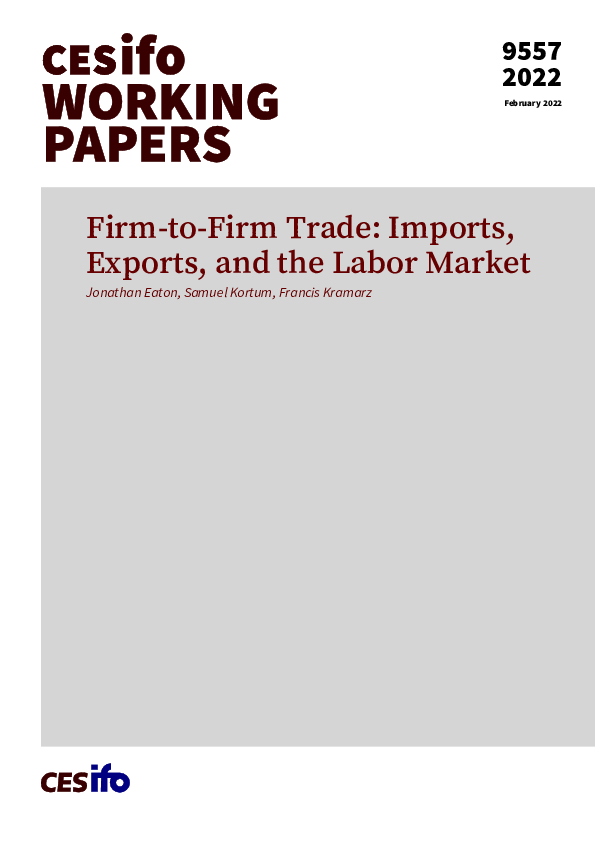Firm-to-Firm Trade: Imports, Exports, and the Labor Market
CESifo, Munich, 2022
CESifo Working Paper No. 9557

Customs data reveal heterogeneity and granularity of relationships among buyers and sellers. A key insight is how more exports to a destination break down into more firms selling there and more buyers per exporter. We develop a quantitative general equilibrium model of firm-to-firm matching that builds on this insight to separate the roles of iceberg costs and matching frictions in gravity. In the cross section, we find matching frictions as important as iceberg costs in impeding trade, and more sensitive to distance. Because domestic and imported intermediates compete directly with labor in performing production tasks, our model also fits the heterogeneity of labor shares across French producers. Applying the framework to the 2004 expansion of the European Union, reduced iceberg costs and reduced matching frictions contributed equally to the increase in French exports to the new members. While workers benefited overall, those competing most directly with imports gained less, even losing in some countries entering the EU.
Labour Markets
Trade Policy